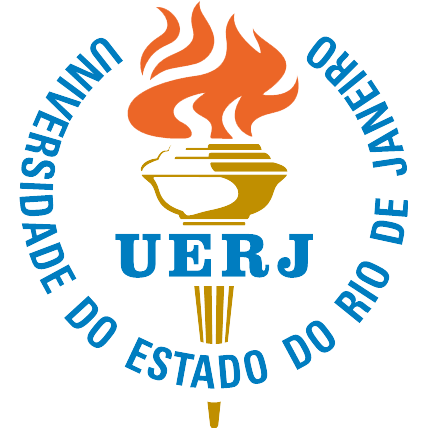O uso da eletroestimulação no nervo tibial posterior no tratamento da incontinência urinária [Electrostimulation of the posterior tibial nerve in treatment of urinary incontinence]
DOI:
https://doi.org/10.12957/reuerj.2014.6779Keywords:
Incontinência urinária, eletroestimulação, nervo tibial, qualidade de vida [Urinary incontinence, electrical stimulation, tibial nerve, quality of life] [Incontinencia urinaria, electroestimulación, nervio tibial, calidad de vida]Abstract
O objetivo deste estudo foi avaliar a eletroestimulação no nervo tibial posterior no tratamento da incontinência urinária de urgência ou mista. Trata-se de uma pesquisa quase experimental com oito pacientes, com diagnóstico de incontinência urinária de urgência ou mista, realizada no Estado de Santa Catarina, em 2010. A avaliação incluiu ficha de avaliação fisioterapêutica, diário miccional e questionário de qualidade de vida - King’s Health Questionnaire. Foram realizados 12 atendimentos de 30 minutos com eletroestimulação no nervo tibial posterior. Os resultados mostram redução na frequência de perdas urinárias diurnas em 62% das pacientes, diminuição da frequência miccional noturna em 37,5% e redução da quantidade das perdas urinárias, de intensa para moderada e de moderada para leve. Não se observou diferença significativa nos escores do questionário de qualidade de vida após o tratamento. Conclui-se que o método estudado apresentou impacto positivo nas pacientes em relação às perdas involuntárias de urina e à quantidade de urina perdida.
ABSTRACT
The aim of this study was to evaluate electrostimulation of the posterior tibial nerve in treating urgency or mixed urinary incontinence. This quasi-experimental study of eight patients with a diagnosis of urgency or mixed urinary incontinence, was conducted in Santa Catarina State, Brazil, in 2010. The assessment included a physical therapy evaluation form, bladder diary and King’s Health Quality of Life Questionnaire. Twelve 30-minutes procedures of electro-stimulation of the posterior tibial nerve were performed. The results show reduced frequency of daytime urinary incontinence in 62% of the patients, decreased nocturnal urinary frequency in 37.5%, and reduction of urinary leakage from severe to moderate and moderate to mild. No significant difference in quality of life questionnaire scores was observed after treatment. It was concluded that the method studied had positive impact on patients’ involuntary urine loss and the amount of urine lost.
RESUMEN
El objetivo de este estudio fue evaluar la electroestimulación del nervio tibial posterior en el tratamiento de la incontinencia urinaria de urgencia o mixta. Se trata de una investigación casi experimental con ocho pacientes, con diagnóstico de incontinencia urinaria de urgencia o mixta, realizada en el Estado de Santa Catarina – Brasil, en 2010. La evaluación incluye ficha de evaluación fisioterapéutica, diario miccional y cuestionario de calidad de vida King’s Health Questionnaire. Se realizaron 12 atenciones de 30 minutos con electroestimulación del nervio tibial posterior. Los resultados muestran reducción en la frecuencia de pérdidas urinarias diurnas en 62% de las pacientes, disminución de la frecuencia miccional nocturna en 37,5% y reducción de la cantidad de orina de las pérdidas urinarias, de intensa a moderada y de moderada a leve. No se observó diferencia significativa en los resultados del cuestionario de calidad de vida después del tratamiento. Se concluye que el método estudiado presentó impacto positivo en las pacientes con relación a las pérdidas involuntarias de orina y a la cantidad de orina perdida.
DOI: http://dx.doi.org/10.12957/reuerj.2014.6779
Published
How to Cite
Issue
Section
License
When publishing in Revista Enfermagem UERJ, the authors declare that the work is their exclusive authorship and therefore assume full responsibility for its content.
Authors retain copyright to their article and agree to license their work using a Creative Commons Attribution International Public License (CC BY), thereby accepting the terms and conditions of this license (https://creativecommons.org/licenses/by/4.0/legalcode.en), which allows material created by the author to be distributed, copied and displayed by third parties. The original work must be cited and present a link to the article available on the website of the journal in which it was published.
The Copyright of the articles published in Revista Enfermagem UERJ belongs to their respective author(s), with the rights of first publication assigned to Revista Enfermagem UERJ, with the work simultaneously licensed under a Creative Commons License CC BY, which allows sharing of work with recognition of authorship and initial publication in this journal.
The authors grant Revista Enfermagem UERJ the right of first publication, to identify themselves as the original publisher of the work and grant the magazine a license of non-exclusive rights to use the work in the following ways:
- Sell and/or distribute the work in printed copies and/or electronic format;
- Distribute parts and/or the work as a whole with the aim of promoting the magazine through the internet and other digital and printed media;
- Record and playback work in any format, including digital media.
In line with the journal's policies, each published article will be assigned a Creative Commons Attribution (CC BY) license.









